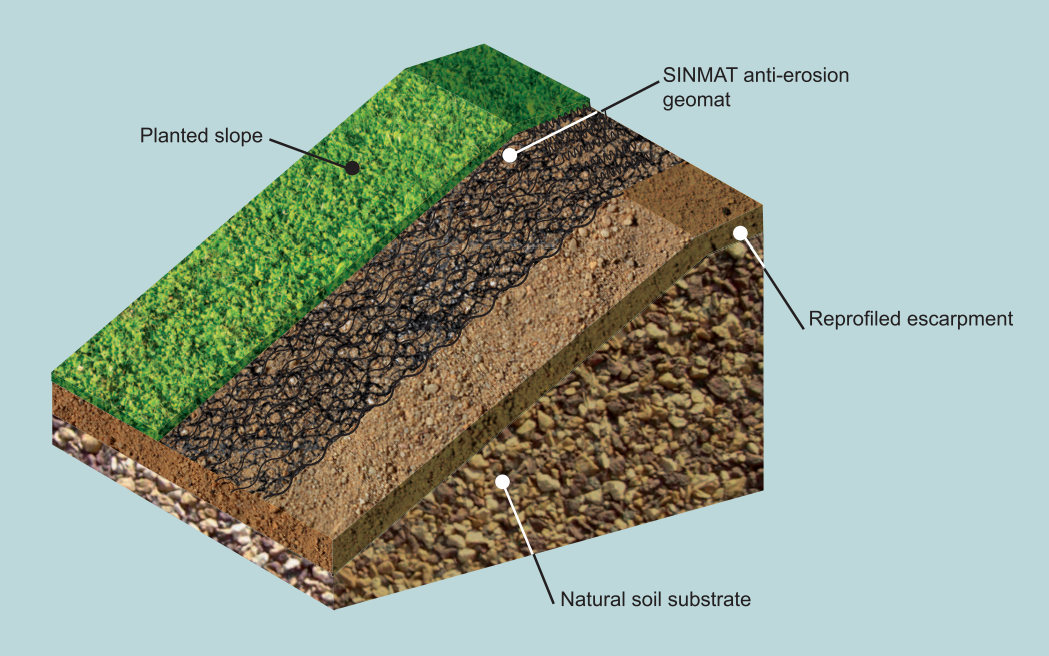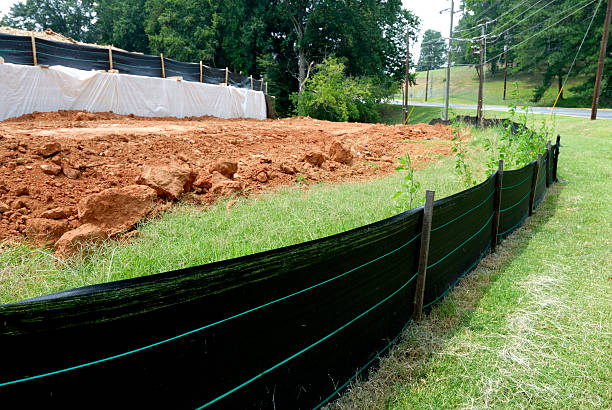Ideal Practices for Erosion Control in Building And Construction Projects
Are you working on a building and construction task and worried regarding disintegration control? Look no more! In this write-up, we will assist you through the finest practices for protecting against disintegration on your website. You'll discover five vital strategies, efficient debris and drainage management approaches, essential factors to consider for slope stabilization, and ideas for shielding plant life and dirt. We'll additionally dive right into the relevance of executing appropriate drainage systems. Prepare to take on disintegration head-on and guarantee the success of your construction job.
5 Essential Disintegration Control Techniques

To successfully regulate disintegration on your building and construction site, you'll require to apply essential strategies such as incline stabilization and sediment control procedures. Slope stabilization is critical in stopping dirt erosion on high inclines. Another effective method is the use of disintegration control blankets or mats, which are positioned on the incline and assistance maintain dirt bits while enabling plants to grow.
Reliable Sediment and Runoff Management

You can efficiently manage debris and runoff in your construction project by applying proper disintegration control actions. Sediment and drainage monitoring is essential to stop disintegration and shield the surrounding environment. One efficient action is the setup of silt fences along the perimeter of the building and construction site. These fencings assist to have debris and prevent it from getting in nearby water bodies. One more vital practice is the execution of disintegration control coverings or floor coverings. These coverings offer a safety layer on bare soil, lowering the impact of rainfall and avoiding disintegration. Additionally, making use of sediment containers or debris catches can aid to record sediment and prevent it from entering stormwater systems. Routine maintenance of these procedures is important to guarantee their efficiency throughout the building and construction task. This consists of cleaning and examining debris basins and consistently changing silt fences and erosion control coverings as needed. By applying these disintegration control measures, you can efficiently handle debris and runoff in your construction project, minimizing the effect on the setting and conforming with regulatory requirements.
Key Factors To Consider for Incline Stabilization
When considering incline stabilization, it is essential to analyze the terrain and recognize prospective areas of instability. You require to meticulously analyze the incline's attributes, garden edging such as its angle, drain, and composition patterns. Look for signs of erosion, such as exposed roots, splits, or down soil. These signs can offer you a concept of where stablizing actions may be needed.
Another option is to plant vegetation on the slope, as the roots can help anchor the dirt and control disintegration. Additionally, mounting disintegration control blankets or floor coverings can give prompt defense while greenery becomes well established.
It's critical to frequently monitor the maintained inclines to ensure their effectiveness. Maintain an eye out for any signs of activity or erosion, and take prompt action if required. Routine upkeep, such as evaluating and repairing any kind of broken procedures, is also vital to make sure long-term security.
Finest Practices for Plants and Soil Security
One efficient means to protect vegetation and soil on inclines is by routinely examining for signs of disintegration and taking instant action if required. Start by checking the incline for any you can try here type of indications of erosion, such as subjected roots, bare soil spots, or sediment buildup at the base. Implement erosion control procedures such as installing disintegration control blankets, mulching, or also creating maintaining wall surfaces if required.
Applying Correct Drainage Equipments
When it comes to managing water flow and avoiding disintegration, comprehending these factors is essential. Steeper inclines can lead to faster water circulation, raising the risk of erosion and flooding. On the other hand, gentler slopes permit water to flow much more gradually, minimizing disintegration possibility.
Sandy soils often tend to drain faster due to their crude structure, while clay dirts have a slower drain price due to their portable nature. In addition, taking into consideration the dirt characteristics assists avoid waterlogging, which can lead to poor plant growth and damages to structures.
Verdict
In verdict, when it comes to disintegration control in construction tasks, you should comply with these best methods. Take into consideration slope stablizing methods to guarantee the stability of the website. By complying with these crucial techniques, you can effectively manage erosion and make sure the success of your construction job.
To efficiently control erosion on your construction website, you'll need to implement crucial methods such as slope stablizing and debris control measures. Slope stabilization is vital in avoiding dirt erosion on steep slopes. Another effective method is the use of disintegration control coverings or floor coverings, which are placed on the incline and assistance maintain dirt fragments while enabling vegetation to grow. One more choice is to plant greenery on the incline, as the article source roots can help anchor the soil and control disintegration. Implement disintegration control actions such as setting up erosion control blankets, mulching, or even constructing retaining wall surfaces if needed.